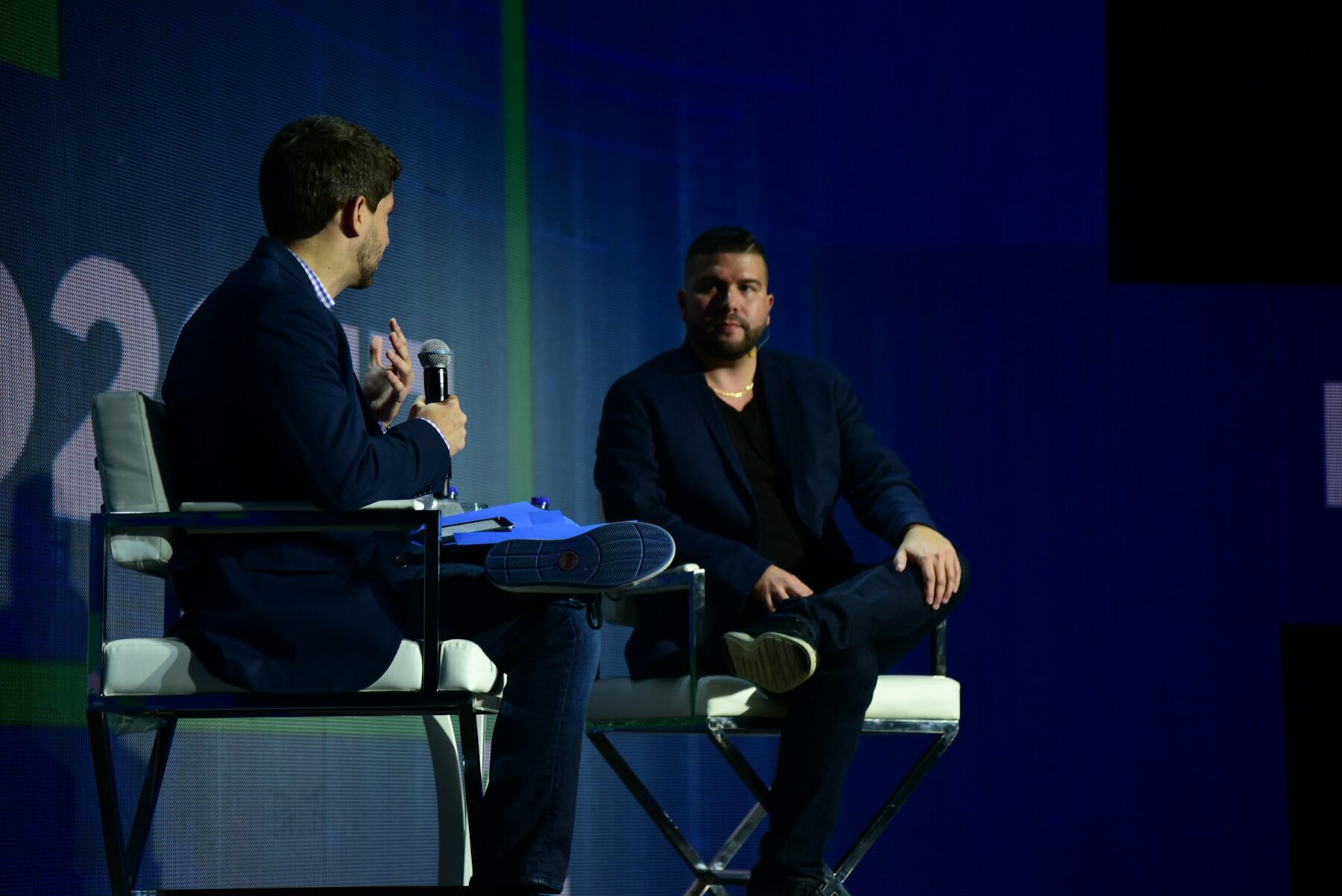Public speaking can feel like an uphill battle when your words fail to resonate, leaving audiences disengaged. More than teaching vocal elements, our students also learn to combine their voices and linguistic devices to deliver more creative speeches. Discover how to use stylistic devices in speech to capture your audience’s attention and make your message more memorable.
How to Use Stylistic Devices in Speech
Effective speech delivery combines powerful stylistic devices — including rhetorical questions, anaphora, epistrophe, antithesis, parallelism, alliteration, and antimetabole — with strategic delivery techniques to create presentations that move audiences to action. With strategic pauses, pitch variation, pacing, volume control, inflection, and body language, speeches with literary devices can initiate actions, challenge beliefs, or persuade people.
 Stylistic devices, also called literary or linguistic devices, make speeches more interesting, engaging, and effective. See how you can utilize these linguistic devices to express ideas clearly, add emotion, and hold your audience’s attention.
Stylistic devices, also called literary or linguistic devices, make speeches more interesting, engaging, and effective. See how you can utilize these linguistic devices to express ideas clearly, add emotion, and hold your audience’s attention.
| Stylistic Device | Examples | Vocal Elements |
| Rhetorical question | “Are we just going to give up?” | Raise your voice, then pause |
| Anaphora | “We will not falter. We will not fail. We will not give up.” | Stress the repeated word each time |
| Epistrophe | “We fought for freedom. We died for freedom. We will live for freedom.” | Emphasize the ending word |
| Antithesis | “United we stand, divided we fall.” | Use different tones for each side |
| Parallelism | “To err is human, to forgive divine.” | Keep the same rhythm for each part |
| Alliteration | “Busy as a bee.” | Slightly stretch the repeated sounds |
| Antimetabole | “When the going gets tough, the tough get going.” | Pause in the middle, stress the reversed words |
Applying Stylistic Devices in Speeches
We recommend using a speech checklist to develop and establish a formal style of speech. In your checklist, you can consider using these stylistic devices to capture attention, create rhythm, and drive your points home.
1. Rhetorical Questions
This stylistic device works to highlight a point or encourage reflection. Pause briefly after asking the question to give your audience time to process. For example, Martin Luther King, Jr. asked, “When will you be satisfied?” in his notable speech, challenging listeners to consider justice.
2. Anaphora
Anaphora means repeating the same word or phrase at the start of several sentences or clauses. This device creates rhythm and emphasizes important ideas. A classic example is Winston Churchill’s “We shall not flag nor fail. We shall go on to the end. We shall fight in France and on the seas and oceans.”.
3. Epistrophe
Epistrophe repeats a word or phrase at the end of successive sentences or clauses. By echoing words at the end, you draw attention to the repeated idea and help it linger in the mind. A famous use is Abraham Lincoln’s: “…of the people, by the people, for the people.”.
4. Antithesis
Antithesis sets up a contrast between ideas to highlight their differences in a clear, striking way. Use antithesis to clarify your main message or to challenge common beliefs. Neil Armstrong’s moon landing quote, “That’s one small step for a man, one giant leap for mankind,” is a popular antithesis.
5. Parallelism
Parallelism means using the same grammatical structure or pattern in multiple parts of a sentence or list. This device improves flow and makes information easier to follow. Julius Caesar’s “I came, I saw, I conquered” is a well-known quote demonstrating parallelism using the same verb structure.
 6. Alliteration
6. Alliteration
Alliteration uses the same beginning sounds in several words close together. This gives your speech a pleasing, musical quality and can make phrases easier to remember. We recommend using alliteration for names, events, or messages like “Big, bold, and brave” to make the language more colorful and turn ordinary messages into catchy slogans.
7. Antimetabole
Antimetabole means repeating a phrase in reverse order. This device grabs attention and creates a sense of balance or irony. John F. Kennedy’s “Ask not what your country can do for you — ask what you can do for your country” is a good example. This leaves your audience with a striking idea or challenges them to think differently.
Delivering Stylistic Devices Effectively
Using specific vocal and body tactics helps your message become clearer and more memorable for your listeners.
1. Pause for Impact
Pausing also gives listeners time to understand and process what you said. Start with these tips:
- Pause for two seconds after a main point to allow it to sink in.
- Use a pause before sharing surprising facts so the audience listens closely.
- Avoid filler words like “um” by staying silent instead.
2. Vary Pitch, Pace, and Volume
Applying vocal variety keeps people listening and makes linguistic devices more interesting. Here’s how you can vary your vocal tone:
- Use a higher pitch to show enthusiasm in vivid stories.
- Slow down when delivering quotes or important points.
- Get quieter for emotional topics and louder for confident statements.
3. Use Inflection for Emphasis
Stressing the right words enables your message to sound clearer and more persuasive. Here are some voice inflection exercises to try:
- Stress keywords in a sentence to guide your audience’s attention.
- Change your tone when asking rhetorical questions.
- Practice reading famous lines aloud with different inflections.
4. Incorporate Body Language and Non-Verbal Cues
Your body language and non-verbal cues can add meaning and creativity to your delivery. Use these to influence how your audience will receive your message:
- Use open hand gestures to seem welcoming and honest.
- Change your facial expression to match the mood or emotion of your story.
- Stand with good posture to appear more confident and in control.
 Related Questions
Related Questions
How to Balance the Use of Stylistic Devices in Speeches?
Effective balance requires using stylistic devices strategically to enhance your message rather than overwhelm it. It’s ideal to incorporate two to three key devices per speech section. The key is to vary your techniques throughout the presentation and allow natural speech patterns to dominate.
How to Avoid the Common Pitfalls in Using Stylistic Techniques?
To avoid common pitfalls in using stylistic techniques, choose devices that support your message rather than distract from it. Overusing figurative language, clichés, or complex metaphors can confuse listeners and weaken your speech.
How to Choose the Right Linguistic Devices in Speeches?
Choosing the right linguistic devices depends on your speech’s objective and the audience’s nature. Select devices that will let you make sounds that evoke emotional responses or intellectual engagement, considering their impact on clarity and memorability.
Conclusion
As you consciously integrate stylistic devices into your speeches, you can captivate audiences and help people remember your message. Take a vocal class today to practice and build confidence in applying linguistic devices for your next speech.






